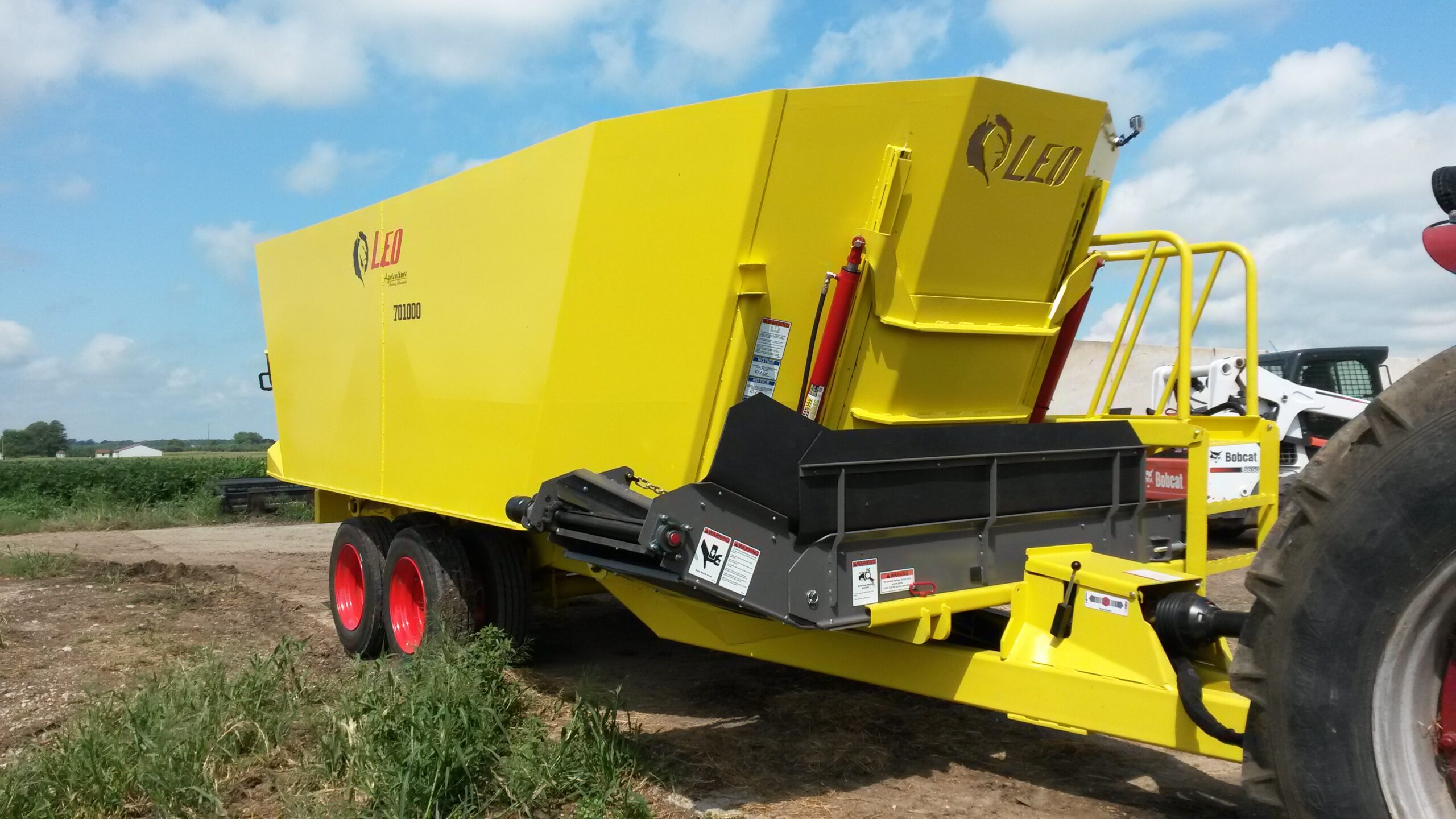**What Is The Recommended Procedure For Processing Round Bale Forage?**
The variation in bale size, forage type, and moisture content makes it challenging to recommend a single procedure for processing and mixing round bales in all cases. However, these general guidelines can help optimize the process for single and multiple round bales:
**Processing Round Bales**
**Single Bale Procedure:**
1. **Set Mixer Speed to Low:** Run the mixer at 15-20 auger RPM (200-250 tractor PTO RPM) to prevent stalling while initially cutting the bale. Start without the restrictor blades engaged.
2. **Add Bale Slowly:** Gently insert the bale between the auger and sidewall of the mixer. For single auger mixers, add from the rear; for twin auger mixers, add between the augers.
3. **Add Wet Ingredients Quickly:** As the bale is cut into larger pieces, rapidly add moist ingredients (such as haylage, high moisture grain, or byproducts). This adds weight and moistens the bale for more effective mixing.
4. **Increase Auger Speed and Engage Restrictor Blades:** Once the bale is partially processed and moving with the other ingredients, increase the auger speed to 41 RPM and engage the restrictor blades for more aggressive particle reduction.
**Multiple Bale Procedure:**
1. **Follow Single Bale Procedure for First Bale:** Add the first bale following the steps outlined above.
2. **Add Subsequent Bales:** As the first bale is cut into pieces, add the next bale.
3. **Add Wet Ingredients:** After all bales are added, rapidly add the remaining moist ingredients.
4. **Complete Mixing:** Process and mix according to the steps for a single bale.
**Tips for Optimal Mixing:**
* Avoid over-processing. Excessive processing can create a “bi-modal” particle size distribution, leading to ration sorting.
* Mixers with variable speed augers and restrictor blades allow for greater control over particle size reduction.
* On-farm trials are recommended to fine-tune the process for your specific circumstances.
**How Feed Mixers Can Help**
Specialized mixing equipment, such as the Feed Mixer from LEO Agriculture, can significantly improve the processing of round bales. These machines offer:
* **Variable Auger Speeds:** Adjust auger speed to match the size and moisture content of the bale.
* **Restrictor Blades:** Engage these blades to achieve the desired particle size reduction.
* **Efficient Mixing:** The design of the Feed Mixer promotes thorough and even mixing of ingredients.
**Benefits of Using a Good Feed Mixer**
* Improved ration consistency and uniformity
* Increased feed intake and digestibility
* Reduced feed costs and waste
* Enhanced animal performance
**Contact LEO Agriculture Today**
LEO Agriculture is a global manufacturer of high-quality agricultural equipment. We offer Feed Mixers and Manure Spreaders to meet the diverse needs of farmers worldwide. For a quotation, to become a distributor, or to ask questions, contact us at:
[Insert contact information here]
**Disclaimer:**
This article is written by AI and may contain incorrect information. Always consult a LEO professional for accurate guidance. If any trademarks have been used, LEO Agriculture does not manufacture, distribute, or endorse these parts.
Visit www.leo-ag.com for more information.
Key Words: Round Bale Forage Processing, Single Bale Processing, Multiple Bale Processing, Mixing Optimization, Feed Mixers, Variable Auger Speeds, Restrictor Blades, Optimal Mixing, Bi-modal Particle Size Distribution, Ration Sorting, On-farm Trials, Feed Mixer from LEO Agriculture, Improved Ration Consistency, Increased Feed Intake, Digestibility, Reduced Feed Costs, Enhanced Animal Performance, LEO Agriculture, Agricultural Equipment, Vertical, TMR, Feed, Mixer, Manure, Spreader
Visit www.leo-ag.com for more information.
If trademarks have been used in this AI article they do not belong to FMK and the represented company does not manufacture, distribute or endorse these parts,machines, or articles. They have no affiliation with LEO and probably dislikes us.

